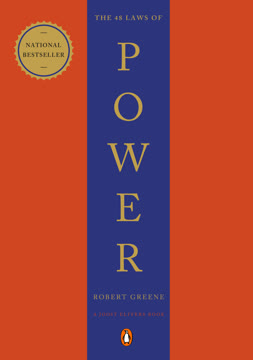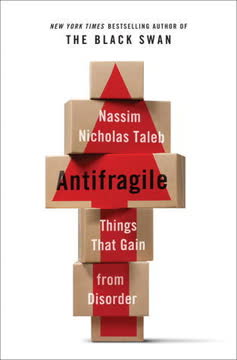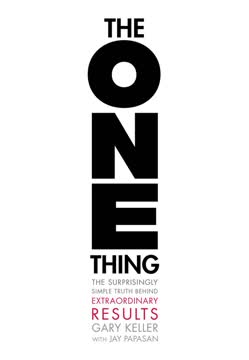Key Takeaways
1. Mental Models: Powerful Tools for Decision-Making and Problem-Solving
"Mental models are an artefact of belief. They are the beliefs that a user holds about any given system or interaction."
Mental models are cognitive frameworks that shape our understanding of the world and guide our decision-making processes. They are based on our experiences, knowledge, and beliefs, acting as internal representations of external reality. These models help us simplify complex information, make predictions, and solve problems efficiently.
The power of mental models lies in their versatility. They can be applied across various domains, from personal life to professional settings. By consciously developing and refining our mental models, we can enhance our ability to:
- Analyze situations more effectively
- Generate creative solutions
- Make better-informed decisions
- Adapt to new challenges quickly
To harness the full potential of mental models, it's crucial to:
- Recognize the limitations of our existing models
- Actively seek out new perspectives and information
- Regularly update and refine our mental frameworks
- Apply multiple models to complex problems for a more comprehensive understanding
2. Understanding Cognitive Biases to Improve Thinking
"Cognitive bias is essentially an error in the way that we think that affects our decision making skills as well as our judgment."
Cognitive biases are systematic errors in thinking that can lead to poor decision-making and flawed judgments. These biases are deeply ingrained in our mental processes and often operate subconsciously, influencing our perceptions, beliefs, and actions without our awareness.
Recognizing and mitigating cognitive biases is crucial for improving our thinking and decision-making abilities. Some common cognitive biases include:
- Confirmation bias: Seeking information that confirms our existing beliefs
- Anchoring bias: Relying too heavily on the first piece of information encountered
- Availability heuristic: Overestimating the likelihood of events based on their ease of recall
- Dunning-Kruger effect: Overestimating our own knowledge or abilities in areas where we lack expertise
To combat cognitive biases, we can:
- Actively seek out diverse perspectives and contradictory evidence
- Practice metacognition (thinking about our thinking)
- Use structured decision-making processes
- Collaborate with others to challenge our assumptions
- Regularly reflect on and learn from our past decisions and their outcomes
3. Productivity Boosters: The Pareto Principle and 2-Minute Rule
"The Pareto principle states that for 80 percent of the effort exerted, you will see 20 percent results."
The Pareto Principle, also known as the 80/20 rule, suggests that roughly 80% of effects come from 20% of causes. This principle can be applied to various aspects of life and work to enhance productivity and efficiency.
Applications of the Pareto Principle:
- Prioritizing tasks: Focus on the 20% of activities that yield 80% of results
- Time management: Identify and eliminate low-value activities
- Resource allocation: Concentrate resources on high-impact areas
- Problem-solving: Address the vital few issues that contribute to most problems
The 2-Minute Rule states that if a task takes less than two minutes to complete, it should be done immediately. This simple rule helps to:
- Prevent small tasks from piling up
- Reduce mental clutter and decision fatigue
- Build momentum and create a sense of accomplishment
- Improve overall productivity by tackling quick wins
By combining these two productivity boosters, we can focus on high-impact activities while efficiently managing smaller tasks, leading to significant improvements in overall productivity and effectiveness.
4. Problem-Solving Techniques: Inversion and Occam's Razor
"Invert, always invert."
Inversion is a powerful problem-solving technique that involves approaching a problem from the opposite direction. Instead of focusing solely on how to achieve a desired outcome, inversion encourages us to consider what could lead to failure and how to avoid it.
Benefits of using inversion:
- Identifies potential obstacles and pitfalls
- Reveals hidden assumptions and biases
- Generates new insights and perspectives
- Helps in developing more robust solutions
Occam's Razor, on the other hand, is a principle that states that the simplest explanation or solution is often the correct one. This concept can be applied to problem-solving by:
- Encouraging clarity and simplicity in thinking
- Reducing unnecessary complexity in solutions
- Focusing on the most essential elements of a problem
- Avoiding over-complication and analysis paralysis
By combining inversion and Occam's Razor, we can approach problems from multiple angles while striving for elegant, straightforward solutions. This balanced approach helps in developing comprehensive yet practical strategies for addressing complex challenges.
5. Warren Buffett's Circle of Competence for Decision-Making
"Always stick with what you really know."
The Circle of Competence is a mental model popularized by Warren Buffett that emphasizes the importance of operating within one's area of expertise. This concept suggests that individuals should focus on domains where they have a deep understanding and avoid areas where they lack knowledge or experience.
Key aspects of the Circle of Competence:
- Self-awareness: Recognizing your strengths and limitations
- Focus: Concentrating efforts on areas where you have a competitive advantage
- Continuous learning: Expanding your circle of competence over time
- Avoiding overconfidence: Knowing when to seek advice or defer to others' expertise
Applying the Circle of Competence in decision-making:
- Identify your areas of expertise and experience
- Evaluate decisions based on how well they align with your competencies
- Seek additional information or expert advice when venturing outside your circle
- Gradually expand your circle through deliberate learning and practice
By adhering to this principle, we can make more informed decisions, reduce the risk of costly mistakes, and capitalize on our unique strengths and knowledge.
6. Best Practices for Productivity, Problem-Solving, and Decision-Making
"Systems are the key to an organized, functional work and home spaces."
Implementing best practices is crucial for enhancing productivity, problem-solving abilities, and decision-making skills. These practices create a foundation for consistent performance and continuous improvement.
Best practices for productivity:
- Maintain a clean and organized workspace
- Use the 90-minute power work technique for focused sessions
- Avoid multitasking and prioritize important tasks
- Take regular breaks and practice self-care
Best practices for problem-solving:
- Define the problem clearly before seeking solutions
- Use systematic approaches and structured frameworks
- Encourage diverse perspectives and collaborative brainstorming
- Evaluate potential solutions objectively
Best practices for decision-making:
- Gather relevant information from reliable sources
- Consider multiple alternatives before making a choice
- Use decision-making tools like cost-benefit analysis or decision matrices
- Reflect on past decisions to learn and improve future choices
By consistently applying these best practices, we can create a positive feedback loop of improved performance, leading to better outcomes in both personal and professional spheres.
7. Team Mental Models: Enhancing Group Performance
"A team operating under a collection of individual mental models, all conforming to the same rules and structure, can either look like a free flowing, fully functioning, organism or a pile of humans, smacking into each other, fumbling the data, and wasting enormous amounts of time."
Team mental models are shared understanding and representations of key aspects of the team's environment, tasks, and processes. When team members align their mental models, it leads to improved coordination, communication, and overall performance.
Benefits of developing team mental models:
- Enhanced anticipation of team members' needs and actions
- Improved decision-making and problem-solving capabilities
- More efficient resource allocation and task distribution
- Increased adaptability in dynamic environments
Strategies for building effective team mental models:
- Establish clear roles and responsibilities
- Encourage open communication and information sharing
- Conduct regular team debriefs and learning sessions
- Use shared visualization tools and frameworks
- Practice scenario planning and simulations
- Foster a culture of psychological safety and constructive feedback
By investing in the development of shared mental models, teams can achieve higher levels of cohesion, efficiency, and effectiveness in pursuing their goals.
8. Challenging and Changing Your Mental Models
"Being aware of our thinking (asking ourselves provoking questions and reasoning)"
Challenging our mental models is essential for personal growth, adaptability, and improved decision-making. Our existing mental models can become outdated or biased over time, limiting our ability to perceive and respond to new information or changing circumstances.
Steps to challenge and change mental models:
- Recognize your existing mental models and assumptions
- Seek out diverse perspectives and contradictory evidence
- Engage in critical self-reflection and questioning
- Experiment with new ways of thinking and problem-solving
- Embrace continuous learning and intellectual curiosity
Benefits of updating mental models:
- Increased cognitive flexibility and adaptability
- Enhanced creativity and innovation
- Improved decision-making in complex situations
- Greater empathy and understanding of others' perspectives
- Reduced cognitive biases and blindspots
By actively challenging and refining our mental models, we can develop a more accurate and nuanced understanding of the world, leading to better personal and professional outcomes.
Last updated:
FAQ
What's "Mental Models: The Secret Weapon to Master Problem Solving, Boost Your Productivity, and Make Better Decisions" about?
- Overview: The book by Charlie Holl explores the concept of mental models as tools for improving problem-solving, productivity, and decision-making.
- Purpose: It aims to teach readers how to use mental models to navigate complex situations and make better decisions in both personal and professional settings.
- Content Structure: The book is divided into chapters that cover the definition of mental models, types of cognitive biases, and practical applications for productivity and decision-making.
- Target Audience: It is intended for anyone looking to enhance their cognitive processes, from business professionals to individuals seeking personal growth.
Why should I read "Mental Models" by Charlie Holl?
- Practical Tools: The book provides actionable strategies for improving decision-making and problem-solving skills.
- Comprehensive Guide: It covers a wide range of mental models and cognitive biases, offering a thorough understanding of how they affect our thinking.
- Personal and Professional Growth: Readers can apply the concepts to various aspects of life, from career advancement to personal development.
- Expert Insights: The book includes references to well-known figures like Warren Buffett, illustrating the real-world application of mental models.
What are the key takeaways of "Mental Models" by Charlie Holl?
- Understanding Mental Models: Learn what mental models are and how they influence our perception and decision-making processes.
- Cognitive Bias Awareness: Gain insight into different types of cognitive biases and how they can hinder effective decision-making.
- Productivity Techniques: Discover mental models specifically designed to enhance productivity, such as the Pareto Principle and the 2-Minute Rule.
- Decision-Making Strategies: Explore decision-making models used by successful individuals like Warren Buffett, including the Circle of Competence and the 2-List Strategy.
What are mental models according to "Mental Models" by Charlie Holl?
- Definition: Mental models are internal representations of external reality that help us understand and interact with the world.
- Function: They guide our perception, reasoning, and decision-making by simplifying complex information.
- Application: Mental models are used in various fields, including business, science, and everyday life, to solve problems and make informed decisions.
- Importance: Understanding and utilizing mental models can lead to more effective problem-solving and decision-making.
How does "Mental Models" by Charlie Holl explain cognitive bias?
- Definition: Cognitive bias is an error in thinking that affects the decisions and judgments we make.
- Impact: Biases can lead to poor decision-making by distorting our perception of reality and limiting our ability to process information objectively.
- Types: The book discusses various biases, such as confirmation bias, anchoring bias, and the halo effect, and how they influence our thinking.
- Overcoming Bias: It offers strategies to recognize and mitigate the effects of cognitive biases in decision-making processes.
What are some productivity techniques discussed in "Mental Models" by Charlie Holl?
- Pareto Principle: Also known as the 80/20 rule, it suggests that 80% of results come from 20% of efforts, encouraging focus on high-impact activities.
- 2-Minute Rule: A strategy to overcome procrastination by completing tasks that take two minutes or less immediately.
- 90-Minute Power Work: A technique to boost productivity by working intensely for 90 minutes followed by a break.
- Decluttering Workspace: Emphasizes the importance of an organized workspace to enhance focus and efficiency.
How does "Mental Models" by Charlie Holl address decision-making?
- Circle of Competence: Encourages focusing on areas where you have the most knowledge and expertise to make informed decisions.
- 2-List Strategy: A method to prioritize goals by listing top priorities and focusing on them exclusively.
- 10/10/10 Method: A decision-making framework that considers the impact of decisions in 10 minutes, 10 months, and 10 years.
- Attribution Theory: Explains how understanding the causes of events can influence future behavior and decision-making.
What are the best practices for using mental models according to "Mental Models" by Charlie Holl?
- Continuous Learning: Regularly update and expand your mental models to adapt to new information and situations.
- Diverse Perspectives: Incorporate a variety of viewpoints to enrich your mental models and avoid narrow thinking.
- Self-Evaluation: Regularly assess your mental models to ensure they remain relevant and effective.
- Avoid Overreliance: Use mental models as guides, not rigid rules, to maintain flexibility in decision-making.
What should be avoided when using mental models as per "Mental Models" by Charlie Holl?
- Overcomplication: Avoid making mental models too complex, which can hinder decision-making and problem-solving.
- Bias Influence: Be cautious of cognitive biases that can distort your mental models and lead to poor decisions.
- Stagnation: Do not rely solely on familiar mental models; continuously seek new ones to broaden your understanding.
- Neglecting Feedback: Failing to incorporate feedback can limit the effectiveness of your mental models.
How does "Mental Models" by Charlie Holl suggest overcoming cognitive biases?
- Awareness: Recognize and acknowledge the presence of biases in your thinking.
- Reflection: Regularly reflect on past decisions to identify bias-driven errors and learn from them.
- Diverse Input: Seek input from others to challenge your biases and gain different perspectives.
- Mindfulness: Practice mindfulness to stay present and reduce the influence of automatic, biased responses.
What are some examples of mental models discussed in "Mental Models" by Charlie Holl?
- Game Theory: A model for understanding strategic interactions and decision-making in competitive situations.
- Anchoring Heuristic: A cognitive bias where individuals rely too heavily on the first piece of information encountered.
- Homeostasis: A model from biology that describes the tendency to maintain internal stability.
- Working Backward: A problem-solving strategy that involves starting from the desired outcome and working in reverse to find a solution.
What are the best quotes from "Mental Models" by Charlie Holl and what do they mean?
- "Our brains are amazing, wonderful, and powerful parts of our bodies, but they can also be stubborn and controlling." This highlights the dual nature of our cognitive processes, emphasizing the need for awareness and control.
- "Mental models are as natural to humans as eating, sleeping, walking, and talking." This underscores the fundamental role mental models play in our daily lives and decision-making.
- "The best ones have a wide utility." Refers to mental models that are versatile and applicable across various situations, making them valuable tools for problem-solving.
- "You can create a safety for yourself and a motivation for others." Suggests that mastering mental models can lead to personal empowerment and inspire those around you.
Review Summary
Mental Models receives overwhelmingly positive reviews, with readers praising its comprehensive coverage of human thought processes, decision-making, and rationality. Many find it life-changing and intellectually stimulating, despite its dense content. Reviewers appreciate the book's blend of theoretical and practical insights, backed by extensive research. It's lauded for its thorough exploration of biases, heuristics, and decision-making tools. While some find it challenging to digest, most agree it's a valuable resource for understanding and improving thinking processes, with potential applications in various fields.
Similar Books










Download PDF
Download EPUB
.epub digital book format is ideal for reading ebooks on phones, tablets, and e-readers.




